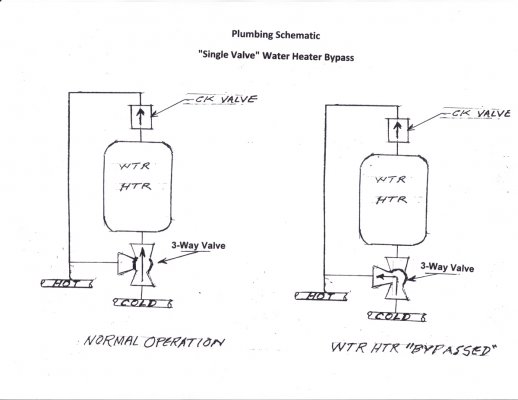Before we actually winterize our fifth wheel, I thought I would do a dummy run just to see how it all works. Good job I did, our unit has a utility/command center for the water system located in one of the lockers. After draining the water heater, I put the valves to the winterize position and started the water pump.
Water was drawn from my water container (simulating antifreeze) but then it started to fill the water heater. The winterizing instructions said that antifreeze should not enter the water heater. Having looked on you tube where someone has done a brilliant video of exactly how this system works, my conclusion is that the check valve for the water heater is not working correctly and letting water back into the water heater. It seems that the valve is located on the hot water water outlet rather than the inlet, so I am assuming that a piece of limescale might be the issue. Anyone have any other suggestions?
Regards
TonyL
Water was drawn from my water container (simulating antifreeze) but then it started to fill the water heater. The winterizing instructions said that antifreeze should not enter the water heater. Having looked on you tube where someone has done a brilliant video of exactly how this system works, my conclusion is that the check valve for the water heater is not working correctly and letting water back into the water heater. It seems that the valve is located on the hot water water outlet rather than the inlet, so I am assuming that a piece of limescale might be the issue. Anyone have any other suggestions?
Regards
TonyL

